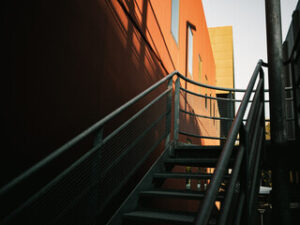Moving Companies Idaho Falls play a crucial role in ensuring a smooth and stress-free relocation process for individuals and businesses alike. The process of moving can be overwhelming and physically demanding, requiring careful planning, organization, and execution.

Whether relocating to a new home or transferring a business to a new location, the assistance of professional movers can significantly reduce the challenges associated with packing, transporting, and unpacking belongings. Moving involves more than just transporting boxes from one place to another.
It requires a strategic approach to ensure that items are safely packed, properly handled during transit, and efficiently unpacked at the destination. Hiring a reliable moving company allows individuals and businesses to focus on adjusting to their new environment rather than being burdened by the complexities of the moving process.
Professional moving companies bring expertise and experience to the table, making them valuable partners in any relocation effort. They understand the nuances of handling different types of items, from fragile glassware to heavy furniture and sensitive electronics. Movers are trained to use the right packing materials and techniques to prevent damage during transportation. They also have the necessary equipment, such as dollies, straps, and protective blankets, to handle large and awkwardly shaped items with care. This level of professionalism minimizes the risk of property damage and personal injury, providing peace of mind to those undergoing a move. Additionally, many moving companies offer insurance options that cover any potential damage or loss, adding an extra layer of protection and reassurance for clients.
Packing is one of the most time-consuming and stressful aspects of moving. Professional movers streamline this process by providing packing services that include sorting, wrapping, and boxing items efficiently. They know how to maximize space within boxes and use padding to protect delicate items from shocks and vibrations during transit. Labeling each box clearly ensures that items are organized and easy to locate upon arrival. For clients who prefer to pack their own belongings, moving companies often supply high-quality packing materials such as sturdy boxes, bubble wrap, and packing tape. This ensures that even self-packed items are adequately protected during the move.
Transportation is another critical element of the moving process. Professional movers have access to well-maintained trucks that are equipped to handle different types of cargo. They know how to load and secure items to prevent shifting and damage during transit. Experienced drivers navigate the best routes to avoid delays and ensure timely delivery. For long-distance moves, some companies offer tracking services that allow clients to monitor the progress of their shipment in real-time. This level of transparency helps alleviate the anxiety associated with not knowing the status of personal or business belongings.
Unpacking and setup at the destination are often overlooked aspects of the moving process, but they can make a significant difference in how quickly individuals and businesses settle into their new space. Professional movers not only transport items but also assist with unloading, placing furniture, and assembling items as needed. They follow instructions to ensure that furniture and equipment are positioned according to the client’s preference, reducing the need for additional adjustments. This level of service allows clients to focus on adapting to their new environment rather than dealing with the physical and logistical challenges of unpacking.
Storage solutions are another valuable service offered by many moving companies. During a move, there may be instances where a new space is not ready for immediate occupancy or there is a need to store excess items temporarily. Professional movers often provide secure storage facilities with climate control and advanced security systems to protect belongings from damage and theft. This option gives clients the flexibility to manage their move at a comfortable pace without feeling rushed to find a place for every item. Some moving companies also offer specialized storage for delicate or high-value items, ensuring that they are preserved in optimal conditions.
The cost of hiring a moving company varies depending on factors such as the size of the move, distance, and level of service required. While some clients may be hesitant about the expense, the benefits of professional moving services often outweigh the cost. The time and effort saved by hiring experts can translate into financial savings by allowing individuals and businesses to resume normal operations more quickly. Additionally, the risk of damage or injury is significantly reduced when experienced movers handle heavy and fragile items. Moving companies often provide detailed quotes that outline all costs involved, helping clients make informed decisions based on their budget and needs.
Customization and flexibility are key advantages of working with professional moving companies. Every move is unique, and reputable movers tailor their services to meet the specific requirements of each client. Some clients may require full-service moves that include packing, transportation, and unpacking, while others may only need help with loading and transport. Moving companies often offer specialized services for unique items such as pianos, antiques, and artwork, ensuring that they are handled with the utmost care. For corporate clients, movers may provide additional services such as office setup, equipment installation, and document organization. This level of customization ensures that each move is handled efficiently and according to the client’s expectations.
Communication and customer service are important aspects of a successful moving experience. Reputable moving companies maintain open lines of communication throughout the moving process, providing updates and addressing any concerns that arise. Clear communication about scheduling, costs, and logistics helps build trust and ensures that clients are well-informed at every stage of the move. Professional movers also respond promptly to any issues or complications, demonstrating a commitment to customer satisfaction. Positive customer service experiences often lead to repeat business and referrals, reinforcing the importance of building strong relationships with clients.
Environmental responsibility is becoming increasingly important in the moving industry. Many moving companies are adopting eco-friendly practices to reduce their environmental impact. This includes using recyclable packing materials, fuel-efficient vehicles, and sustainable disposal methods for unwanted items. Donating or repurposing furniture and household goods instead of discarding them in landfills benefits both the environment and the community. Clients who prioritize sustainability can seek out moving companies that align with their environmental values, ensuring that their move is conducted with minimal ecological impact.
Timing and planning are essential for a successful move. Scheduling the move during off-peak seasons or midweek can help reduce costs and ensure greater availability of services. Creating a detailed inventory of items to be moved helps both clients and movers stay organized and prevents important items from being overlooked. Early coordination with the moving company allows time to address any special requirements, such as securing permits for large trucks or coordinating elevator access in apartment buildings. Professional movers work closely with clients to develop a timeline and action plan that ensures a smooth and efficient transition.
Moving companies also provide valuable guidance and advice to help clients prepare for their move. They may offer checklists, packing tips, and recommendations for organizing and decluttering before the move. Downsizing and donating unnecessary items before packing can streamline the process and reduce overall moving costs. Movers can also advise on how to pack fragile items and electronics to prevent damage during transit. This level of support helps clients feel more confident and prepared as they approach moving day.
Professional moving companies simplify the complex and often stressful process of relocation. Their expertise in packing, transportation, and unpacking ensures that items are handled with care and delivered safely to their destination. The convenience of full-service moving options, including storage and specialized handling, allows clients to focus on settling into their new space rather than managing the logistical challenges of the move. Clear communication, customized services, and a commitment to customer satisfaction distinguish reputable movers from the rest. By entrusting the relocation process to experienced professionals, individuals and businesses can experience a smooth and stress-free transition to their new location.



